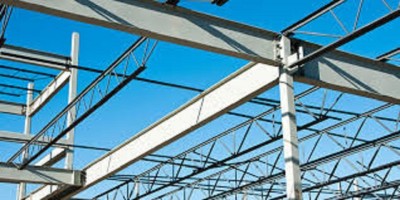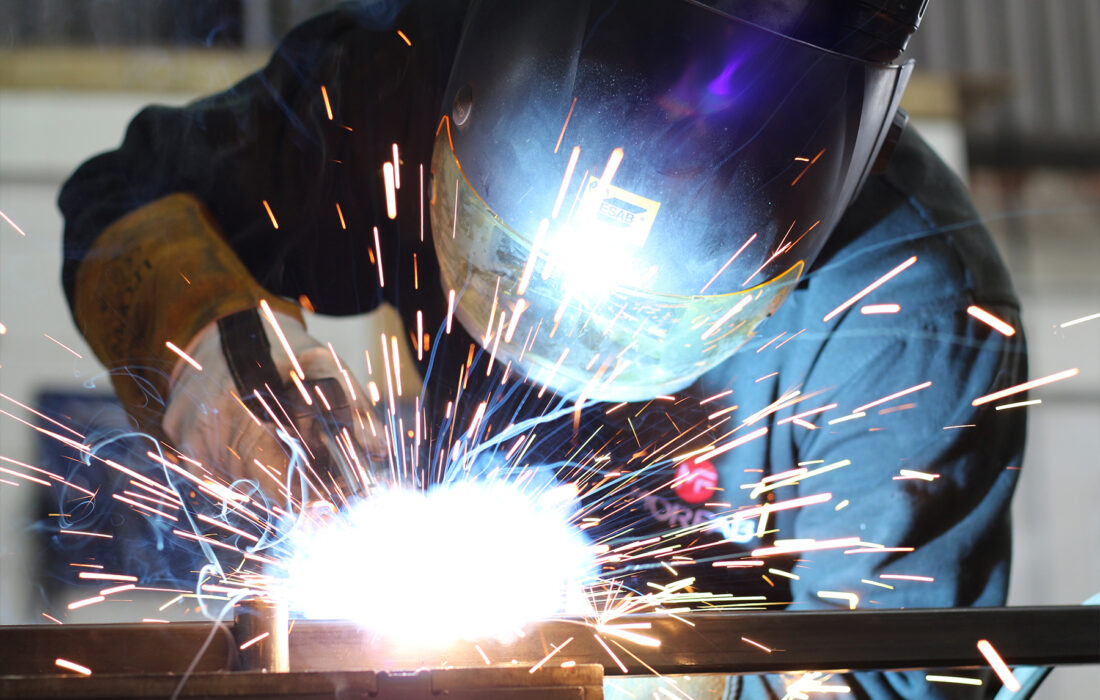Comprehensive Analysis of Cutting-Edge Techniques in Steel Fabrication Market
As the steel manufacture industry continues to develop, the assimilation of advanced strategies has come to be crucial for staying competitive and meeting the demands of modern-day manufacturing standards. In this vibrant industry where modern technology plays a crucial function, recognizing the subtleties of these cutting-edge strategies is not simply a choice but a requirement for those looking to create ahead in the ever-evolving globe of steel manufacture.
Laser Reducing Improvements
In the realm of steel construction, laser cutting innovations have revolutionized the accuracy and effectiveness of steel shaping procedures. By utilizing the power of focused laser beams, suppliers can currently accomplish unequaled levels of accuracy when puncturing various kinds of metals. This innovation allows complex layouts to be implemented with minimal product wastefulness, making it an affordable option for industries calling for high precision parts.
One of the key benefits of laser cutting is its capability to deal with a variety of products, consisting of stainless-steel, aluminum, and carbon steel, with convenience. The process creates clean, burr-free edges, eliminating the requirement for extra finishing actions. Moreover, the non-contact nature of laser reducing reduces the risk of product contamination, leading to better final product.
Furthermore, laser cutting devices can be configured to make swift, specific cuts, substantially minimizing production time compared to standard reducing approaches. This rate and precision make laser reducing especially suitable for automation atmospheres where performance is paramount. As technology remains to advancement, laser cutting is positioned to play an increasingly crucial duty in the steel manufacture industry.

CNC Machining Innovations
The evolution of CNC machining innovations has introduced a new era of accuracy and performance in the steel construction industry. Computer Numerical Control (CNC) equipments have reinvented steel fabrication by providing unrivaled precision and repeatability in the manufacturing process. steel fabrication melbourne. One of the key advancements in CNC machining is the integration of sophisticated software systems that make it possible for real-time surveillance and modifications, causing improved performance and quality control
Moreover, the development of multi-axis CNC equipments has enabled for the construction of intricate steel parts with intricate styles that were formerly testing to create. These devices can do a large range of machining procedures, including milling, boring, turning, and grinding, all with high levels of precision.
Furthermore, the incorporation of automation and robotics in CNC machining has structured production processes, lowered preparations, and lessened the margin of mistake. This integration of innovative modern technologies not just enhances effectiveness however additionally guarantees constant top quality across all made steel parts. Finally, CNC machining innovations remain to drive developments in the steel fabrication industry, establishing brand-new criteria for precision and performance.
Automated Welding Technologies
Automated welding modern technologies have reinvented the steel fabrication industry, boosting effectiveness and accuracy in the welding process. These cutting-edge modern technologies use computer-controlled systems to automate the welding procedure, leading to higher efficiency degrees and improved weld top quality. Among the vital advantages of automated welding is the capability to execute complicated welds with consistent precision, decreasing the probability of mistakes and revamp.
Robotic welding systems are at the forefront of automated welding technologies, providing unparalleled speed and accuracy. These systems can take care of a wide variety of welding tasks, from simple to intricate, with ease (steel fixing). By using sophisticated sensors and software application, robot welders can adapt to variants in material and joint geometry, ensuring an attire and dependable weld
In addition, automated welding technologies enhance work environment safety and security by decreasing the direct exposure of human welders to hazardous fumes and extreme warmth. As the steel manufacture market proceeds to develop, including automated welding technologies will be important for companies aiming to remain affordable and fulfill the growing demands for top quality bonded products.
Robotics Integration in Construction
Using robot systems in manufacture procedures has come to be a pivotal method for improving effectiveness and precision in contemporary production settings. Robotics combination in steel fabrication uses a myriad of benefits, consisting of raised performance, boosted top quality control, and boosted safety and security steps. These advanced robotic systems are geared up with innovative sensing units and shows abilities, allowing them to do intricate tasks with a high level of precision and repeatability.
One of the vital benefits of robotics assimilation in steel fabrication is the capacity to automate repetitive jobs, such as material handling, cutting, welding, and setting up procedures. This not just speeds up manufacturing cycles but likewise minimizes the threat of human mistake, leading to higher overall product top quality. Additionally, robots can operate 24/7, dramatically boosting production output and conference tight project deadlines.

3D Printing in Steel Production
Having revolutionized the steel manufacture market via robotics integration, the burgeoning exploration of 3D printing in steel manufacturing is poised to more development the world of modern production techniques. 3D printing, additionally understood as additive manufacturing, provides unprecedented design flexibility and complexity, enabling the development of intricate steel frameworks that were formerly unattainable with typical manufacturing techniques. By making use of computer-aided style (CAD) software, producers can specifically regulate the link layer-by-layer deposition of steel material, leading to parts with enhanced capabilities and geometries.
Among the crucial benefits of 3D printing in steel production is its ability to minimize material waste considerably. Unlike subtractive production procedures where excess product is trimmed away, 3D printing only makes use of the needed quantity of steel needed for the last part. This performance not only causes cost financial savings yet likewise straightens with sustainable production techniques by minimizing ecological impact.
Furthermore, 3D printing enables quick prototyping and modification, permitting the manufacturing of little sets of intricate steel elements with brief preparations. As the technology remains to mature and come to be a lot more available, its combination right into mainstream steel manufacture procedures is expected to drive technology and effectiveness throughout the market.
Final Thought
To conclude, the steel construction sector has actually seen substantial developments in strategies such as laser cutting, CNC machining, automated welding, robotics combination, and 3D printing. These sophisticated innovations have actually changed the method steel products are manufactured, leading to boosted cost-effectiveness, accuracy, and efficiency. Continued financial investment in these ingenious techniques is critical for the industry to stay competitive and meet the needs of modern-day manufacturing procedures.
As the steel construction industry proceeds to evolve, the assimilation of innovative techniques has ended up being vital for staying competitive and meeting the needs of contemporary manufacturing official source criteria.One of the vital advantages of laser cutting is its ability to deal with a vast range of materials, including stainless steel, light weight aluminum, and carbon steel, with ease.Automated welding modern technologies have actually revolutionized the steel construction industry, boosting effectiveness and precision in the welding procedure.Having actually transformed the steel fabrication sector through robotics assimilation, the growing exploration of 3D printing in steel production is positioned to more development the realm of modern-day manufacturing strategies.In final thought, the steel manufacture market has actually seen substantial innovations in methods such as laser cutting, CNC machining, automated welding, robotics assimilation, and 3D printing.